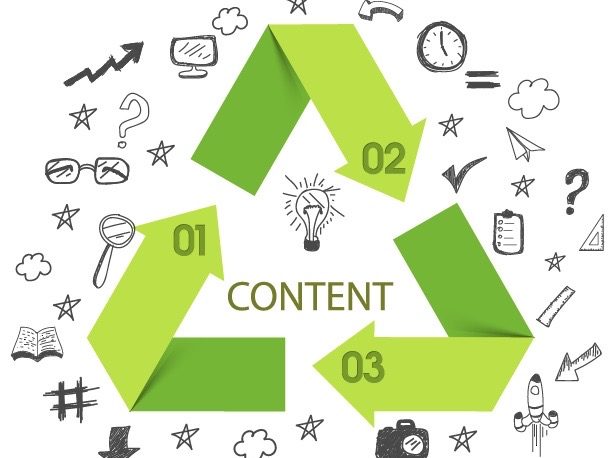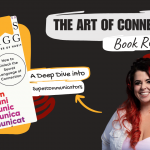If you work in Real Estate you’re probably creating all sorts of content already… client letters, property fliers, social media posts, videos, blogs, buyer/seller reports, white papers… and the list goes on. It’s overwhelming!
Today, I’d like to make all of that a little bit easier for you.
As you know, we create a TON of content here at Agent Inner Circle to help Real Estate professionals just like yourself, and I’ll be honest – keeping up with that amount of content can be downright challenging! Trying to create individual pieces of content for each place it’s in demand is not only time consuming, it’s mentally draining, especially when you’re trying to focus on other areas of your business.
That’s why we use a strategy that takes into account the different places we might be able to reuse our work, which helps us get the most value out of the time, effort and research we put into creating each and every piece of content – and I’d like to share it with you today.
Once I explain our content strategy, I’ll also share an example of a full content outline you can use immediately in your real estate business to create ONE set of content – reuse it again and again – and get the most value from it!
Our Strategy
“Work smart, not hard.” The core concept of our strategy is to maximize the coverage of each piece of content created. But we’re not just sharing the same piece over and over – we format our content so that we can use subsets of it in different ways, across different media.
So, if you’re smart about how you build your content, you can reach a larger audience and turn one asset into dozens. The real trick to it is, picking the right topic upfront to give yourself both the range and the eyeballs.
Picking Topics
First and most importantly, you need to pick topics that lend themselves to reuse. These usually fit a certain mold:
- Not Time Sensitive – Content that relates to a specific moment in history can be great and generate a lot of traffic for you. However, after a certain amount of time it becomes tough to reuse articles about the best practices for using your pager or fax machine. To get the most value from your work over a long period, use topics that may evolve but don’t change in any drastic way over time. An example of this might include “Tips for Staging Your Home to Sell”.
- General Topic but a Focused Audience – When you’re brainstorming topics it can be tough to find the right balance between something that is so focused it’s challenging to reuse, and something that’s way too general to excite your audience. I call this the “Three Little Bears” of content, but I think you can find the porridge that’s just right. To find that balance, try a general topic that gives you a range of reuse, but focus on the specific needs and initiatives of your audience to drive interest and eyeballs. “Your Essential First Time Home Buyer Guide”
- Topics or Lists with Subsets – One of the best tricks for creating reusable content is to pick a topic that includes a list or a large range of subtopics. Things like “Top 10” lists allow you to use each list item as its own topic. I will give you a perfect example of a topic that uses all 3 below – “The Top 10 Questions Every Seller Asks”.
Ways To Recreate and Reuse
Once you’ve got a topic that has reuse potential, you can start outlining your content. When doing so, keep in mind that there are 6 ways you can reuse your content. This is best outlined by Marcia Riefer Johnston of the Content Marketing Institute:
Identical Reuse: this is where content is reused without any variation. You may even have the template locked so no changes can be made.
Section-Based Reuse: maybe only parts of the content you’ve created are reusable, but those sections can be taken in whole and maximized in other content pieces or media.
Fragment-Based Reuse: even reusing small elements of content, like a paragraph or a bullet item, can save time and improve the quality and consistency of your content (the best example of this is something like an email signature).
Component-Based Reuse: rather than looking at the content within a topic to be reused, you can also reuse the topic itself and approach it from alternate angles, or dive deep into one aspect of it.
Conditional Reuse: when content can be reused in relatively the same format, but small changes need to be made to address different sectors of your audience. For example, a “Free Report: Buying a Home with a 700 Credit Score” you might swap out the credit score for different numbers, and based on that, adjust your content to relate directly to people with that credit score.
Variable-Based Reuse: similarly, you can reuse content, but switch out different variables within it to attract different audiences without changing the content itself. For example the content within “Your Complete Guide to Selling Your Barnstable Home” could also work for many other locales by just swapping out Barnstable for another location on Cape Cod.
An Example For You
Now that you understand how to pick topics that have greater potential for reuse, and the different ways you can use content from each of those topics to increase coverage, let’s look at an example that we can all relate to:
Topic: The Top 10 Questions Every Seller Asks
- First, create a list of questions and answers (tip – this can be used as an FAQ when it’s done). Here are 4 Example Questions – (just throwing in a quick shout out to AIC Members Laura Fangman, Natalie Medina and Tawny Aubry for helping craft these questions – thanks so much!):
- Is it a good time to sell?
- Should I renovate my home before selling?
- Can I get it sold by [date]?
- What costs are involved in selling?
- Next, create a report or White Paper “The Top 10 Questions Everyone Asks Before Selling Their Home” outlining your answers to those top 10 questions.
Once you have your FAQ and your report or White Paper, you’ve created enough content at this point to be able to reuse it in whole, in part, or in variations across different channels with different media. Here are a few reuse options for the 10 Questions Every Seller Asks:
- Identical reuse – use the FAQ and report or White Paper exactly as they are, but get more coverage by sharing them in different ways – make a social post, email it out, mail it in the post, host it on your blog or make it part of your website.
- Section-based reuse – use specific questions and their answers to to create a new piece of content, like a deep-dive blog on “The Unexpected Costs of Selling Your Home”
- Fragment-based reuse – use individual questions as ad copy to bait people into reading your FAQ, report or White Paper (which you would have hosted on your blog, website or social pages).
- Component-based reuse – you can retitle and use your same report with new audiences, over and over again: “10 Things You Should Know Before Selling Your Home”
- Conditional reuse – swap out a few general questions for audience specific questions, and your report now directly relates to that audience: “The Top 10 Questions Everyone Ask Before Selling Their Lake Front Home”
- Variable-based reuse – switching out a specific words across the content can allow you to use it for different audiences, for example switching out the word “home” to be “The Top 10 Questions Everyone Asks Before Selling Their Townhome”
The Value of Reusable Content
Reusing content is all about getting the most value out of the hard work you put in, so you can spend your time focusing on working with your clients. While you won’t be able to reuse every piece of content, looking for all the places that you can expand the coverage of your work will undoubtedly make you more productive, reducing the amount of research, development and review time you spend each month.
What other topics do you already reuse? Did we give you any good ideas? Please let us know in the comments below!








Leave a Reply